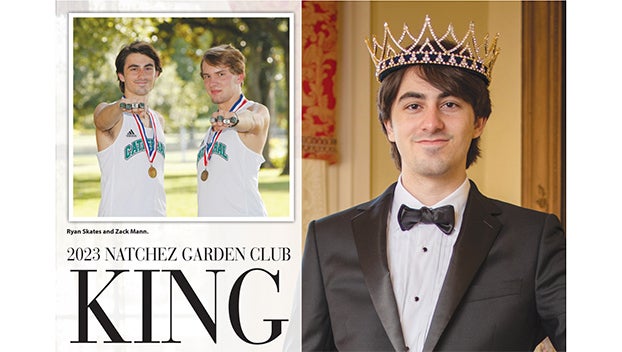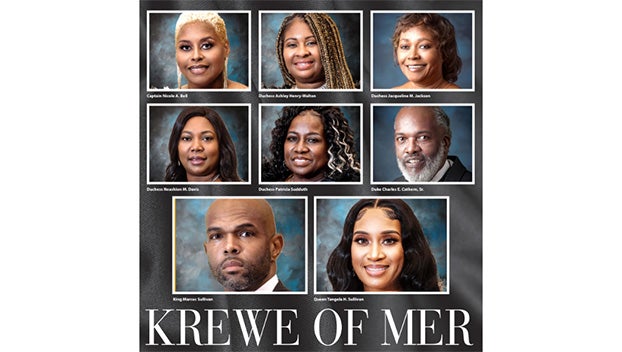Some plants can take heat
Published 12:15 am Sunday, June 19, 2011
There is still time to add colorful bedding plants to your landscape, but it’s important for you to choose plants that are able to thrive in the intense heat of a Louisiana summer. Summer bedding plants come in a variety of heights, textures and colors, and they are adapted to grow in everything from moist, shady areas to hot, dry, sunny locations.
You can create cool, elegant color schemes with pastels, or an explosion of bright, vibrant colors full of excitement. These plants can be used in flowerbeds, mixed borders, containers and hanging baskets to provide the color you crave wherever you want it. Check your local nursery for the following plants and many other delightful choices for summer color.
Angelonia (Angelonia angustifolia) is a relative new comer to summer gardens; we didn’t see it in the nurseries until the late 1990s. Since then, more colors and sizes have been developed, and you should find a nice selection at your local nursery. They are among the most reliable and heat-tolerant plants for sunny, well-drained locations. I especially recommend the Serena angelonias that come in several shades of lavender, purple, pink and white. They are more compact and floriferous than other types, and they’re an LSU AgCenter-recommended Louisiana Super Plants selection.
Blue daze (Evolvulus glomeratus) is a low-growing, shrubby, bedding plant that loves summer heat and sun. Neither insects nor diseases bother this plant, whose grayish foliage and clear, blue flowers add a cool note to the garden. The flowers tend to close up in the afternoon during the intense heat of midsummer, but the plants stay neat, attractive and free from pests from the time you plant them until the first freeze.
A versatile and very reliable plant that does well in full sun to part shade is the wishbone flower (Torenia fournieri). The name of this virtually foolproof plant comes from the way the stamens in the flower are joined together in a wishbone shape. This annual plant provides a tremendous display of blue, purple, lavender, rose, pink or white flowers over a very long period. They make ball-shaped plants under a foot tall.
The Summer Wave and Catalina strains of torenia are quite different. These torenias are vigorous, low-growing plants that create a groundcover of color. They have amazing stamina and will be blooming just as much when the first freeze kills them as they were when first planted. Various shades of blue, purple and pink are available. They are excellent choices for hanging baskets or draped over the sides of pots.
The common lantana or ham and eggs (Lantana camara) has been refined into a number of garden varieties that are among the best plants for summer color. Few plants combine constant flowering, heat tolerance and ease of care as well as lantana does. Lantanas are irresistible to butterflies and are an important plant to include in flower gardens planted with these delightful insects in mind.
Diamond Frost euphorbia is a relatively new plant that serves the role in flowerbeds and containers that baby’s breath does in flower arrangements. This plant is airy and delicate in appearance but is very heat and drought tolerant. Small, white, floral bracts are produced in huge numbers throughout summer. It looks great combined with almost anything.
If I could only have a few of the many heat tolerant bedding plants, pentas (Pentas lanceolata) would be among them. And the Butterfly pentas, a Louisiana Super Plants selection, is a particularly good series to plant. Pentas stay in constant bloom all summer and into fall, with flowers in shades of white, pink, rose, lavender and red. Dwarf varieties stay less than 2 feet tall, and taller varieties grow to 3 feet. They are absolutely care free other than trimming or pinching back occasionally. And they are simply irresistible to butterflies.
The narrow-leaf zinnia (Zinnia angustifolia) is usually a brilliant, in-your-face orange. But it also comes in yellow and creamy white and loves hot, sunny areas. It’s low-growing and constantly covered with flowers and looks particularly nice cascading over the edge of raised planters. Also look for the excellent Profusion zinnias in white, orange, cherry, orange-red and apricot. Once established, these zinnias are fairly drought tolerant.
A shady area is no excuse not to have summer color. I, for one, would rather work in a shady bed when it’s hot, anyway. Wax begonias, coleus, caladiums and impatiens are among those that provide the most reliable color in partly shaded conditions.
Don’t let the heat of July and August do your garden in. Choose your plants carefully and watch your garden thrive despite the weather.
Dan Gill is an LSU AgCenter horticulturist.




